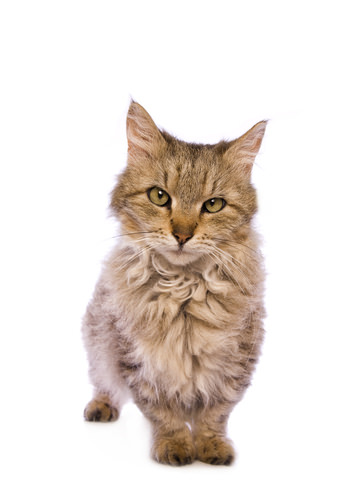
5 Signs Your Cat Could Have Diabetes
Diabetes is a disorder in which glucose (blood sugar) in the blood becomes too high and starts to impact other body systems. Insulin is the hormone responsible for glucose regulation, so a diabetic cat either has no or inadequate insulin or her body is not responding effectively to her insulin. I diagnose Feline Diabetes often and have many diabetic patients in our care.
Here are some of the presenting complaints for these patients.
- Increased Urination
There are many common disorders in cats that can cause an increase in urination, polyuria. This is one of the first questions we ask when presented with a sick cat. The increased blood glucose reaches a level at which it starts to spill into the urine. Because of the way the kidneys work, the increased sugar molecules draw fluid into the urine in the same way that eating a salty meal can cause some people’s feet to swell by drawing fluid into the space between the cells. This process is called Osmotic Diuresis and the increased amount of urine in the litter box is a warning sign for sure.
- Increased Thirst
Because of the fluid loss into the urine, the cat’s body feels thirsty. When I asked questions about water consumption in my most recent case, the owner reported that he was consuming almost an entire 8 ounces of water before lunch time each day. (That’s a lot for a cat’s body weight!) Some of my diabetic patients sit by the sink and beg for their caregivers to turn on the faucet. What seems like cute behavior might be a caution sign. There are other common cat diseases that cause increased thirst, polydipsia, so always tell you veterinarian if you notice this in your cat.
- Increased Appetite
Even though a diabetic cat’s glucose levels are high in the blood, the insulin is required for the glucose to appropriately enter the cells where it can be used for energy. So the diabetic feels very hungry because his cells are desperate for energy. When the cat eats, it merely adds to the high blood sugar issue and perpetuates the cycle. Any cat that eats a lot but still seems thin should raise a red flag.
- Weight Loss, even with the increase in food intake
As you can imagine when the body needs energy, it mobilizes the fat stores causing sometimes dramatic weight loss. These cats often look disheveled and unkempt. They appear thin and their hair coat usually looks flaky and matted. There are so many causes of “unthrifty” appearance in a cat that vets tag these patients as ADR (ain’t doing right) prior to diagnostic work up.
- Weakness in the rear legs
About 10% of diabetic cats will also show signs of Diabetic Neuropathy, usually evidenced as weakness in the rear legs. Affected cats will be unable to jump normally and will often stand down on their hocks. A study in Microvascular Research (April 2008) found that the abnormalities in nerve conduction for diabetic cats were related to microvascular pathology (changes in the components of the cells themselves) and paralleled previous findings in human studies. Since your cat cannot tell you his legs tingle, any change in his gait should motivate you quickly to your vet.
As I have mentioned, these signs can be associated with many common disease of cats and all are significant. If your cat has any of them, do not ignore them. Your veterinarian can run diagnostic tests and get your cat on the road to treatment.
 About The Vet: Dr. Kathryn Primm is a practicing small animal veterinarian and blogger. She has consulted on articles for national magazines, done numerous radio interviews and appeared on local television. She has contributed to an article for Woman’s Day in Feb 2014 and an upcoming piece for Prevention magazine, slated to appear in April 2015.
About The Vet: Dr. Kathryn Primm is a practicing small animal veterinarian and blogger. She has consulted on articles for national magazines, done numerous radio interviews and appeared on local television. She has contributed to an article for Woman’s Day in Feb 2014 and an upcoming piece for Prevention magazine, slated to appear in April 2015.
She has a social media presence on Twitter, Facebook and Google+ and enjoys interaction with others about her passions, animals and communication. She is a regular contributor to Boomeon, the online community which can be found at www.boomeon.com . She has also written a book, Tennessee Tails:Pets and Their People. The book received recognition as Runner Up in the Memoirs category at a national book festival. You can read more about Dr. Primm and how to get the best value for your pet care dollar at her website, www.drprimm.com.

